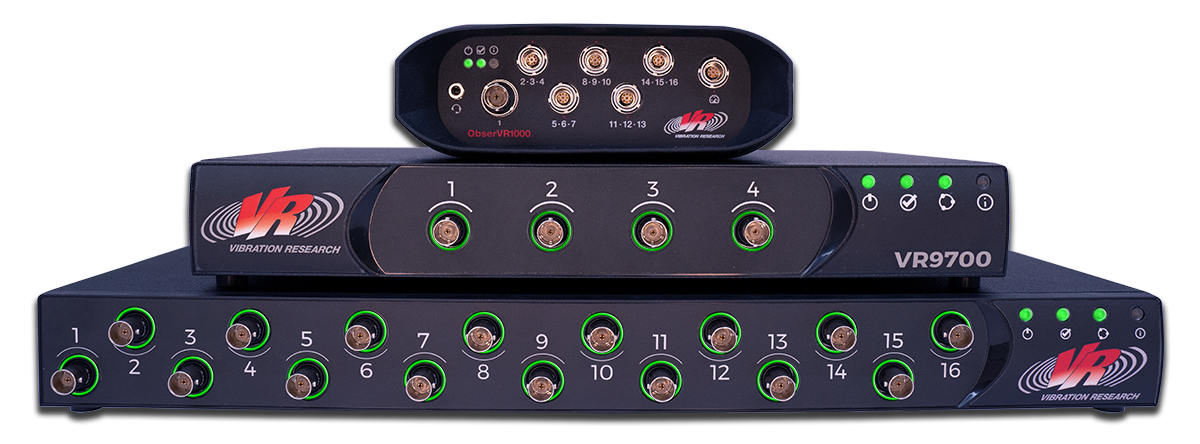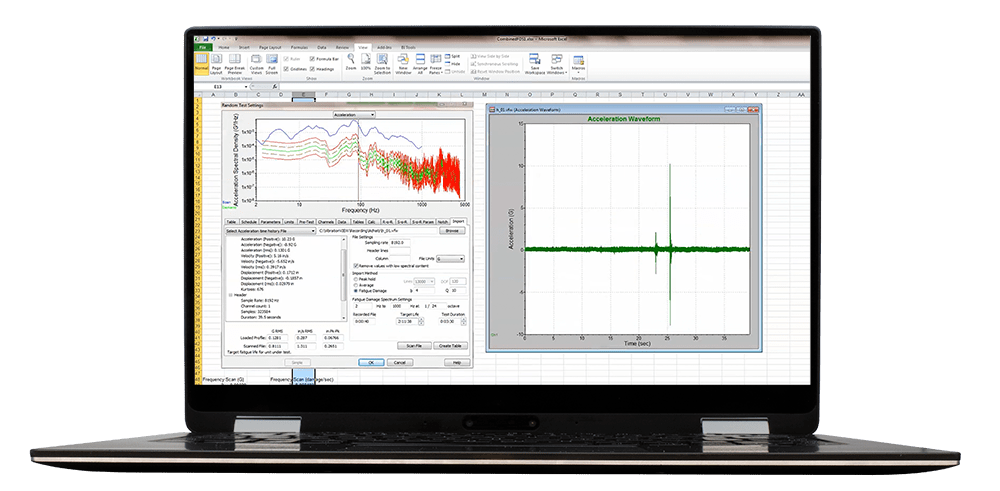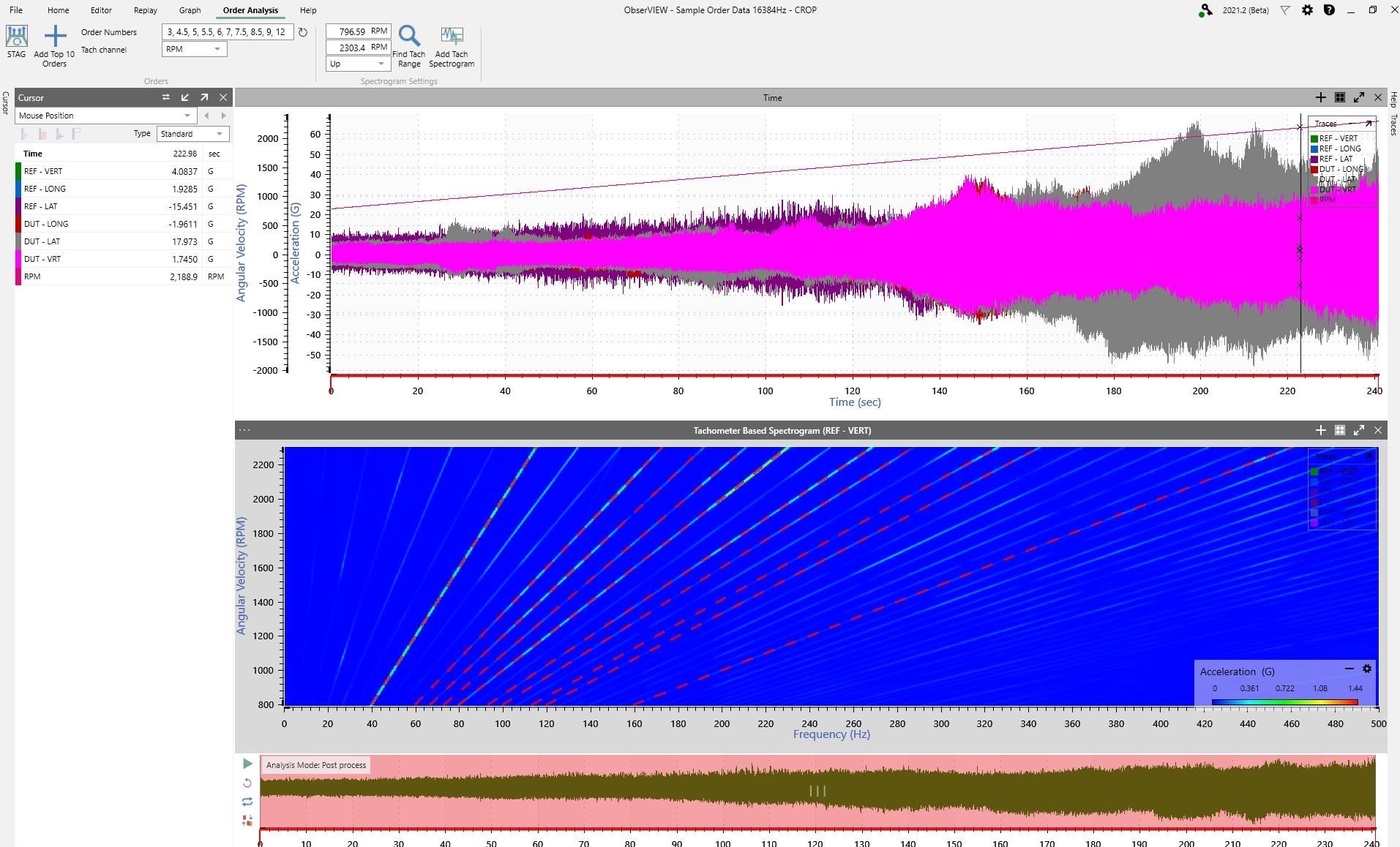Data Recording
In the Lab or On the Road
Control the ObserVR1000 data acquisition system remotely with the VR Mobile application, which runs on a smartphone or tablet using a WiFi connection. Set up, monitor, and modify field data recording without a wired configuration.
- Tachometer inputs
- GPS capabilities
- 6+ hour battery life
- On-board storage
VibrationVIEW Software Package
Sine
Random
Shock
Sine Resonance Track & Dwell (SRTD)
Test Acceleration
Field Data Replication (FDR)
Fatigue Damage Spectrum
Instant Degrees of Freedom (iDOF)
Random Import

Evaluate Comfort
Build and Run a Shaker Test Profile
The bike tires and suspension system helps to dampen vibrations, but new parts add weight, and the motor introduces vibration. E-bike product development requires testing to evaluate comfort compared to recommended values.
- Generate vibration tests from recorded or historical data, including random, sine-on-random, and shock
- Measure amplitude at contact points such as the seat and handlebars in the x, y, and z directions
- Evaluate data with a weighted RMS value according to ISO 2631
- Output customized reports manually or on a schedule
- Examine the coupled effect of the power drive and road conditions with a transmissibility plot
Order Tracking and Analysis
Examine Rotational Behavior
Analyze the response of the e-bike’s motor system to different RPMs and identify how the component’s vibration contributes to the overall level. Order analysis helps locate and prevent product failure relating to rotational sources of vibration.
- Analyze the noise and vibration of a motor or other rotational component
- Run a ramp up or coast down to evaluate the effects of change in speed
- Separate rotational content from the background random
- View the strength of a signal over time/angular velocity at various frequencies
- Compare data in different domains
E-Bike Analysis with ObserVIEW Math
ObserVIEW’s Math feature plots a user-defined math equation on a time or frequency-domain graph. It allows the user to implement custom math operations not defined by the current graph types.
Math channels allow for per-channel filtering, channel combining to create new channels in units of angle, or creating synthesized waveforms.
Math traces allow for templated spectrum math analysis: create an envelope or average PSDs, create trace ratios for comparison, analyze average control on recordings, or compare data to pasted tolerance lines.




